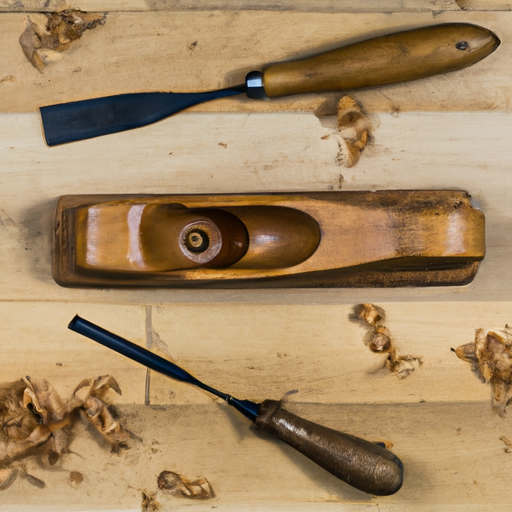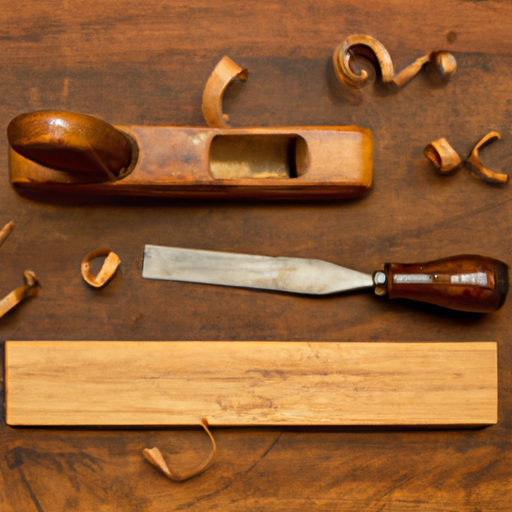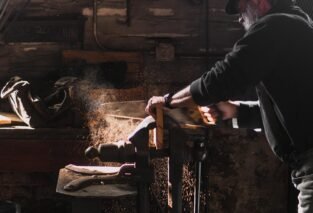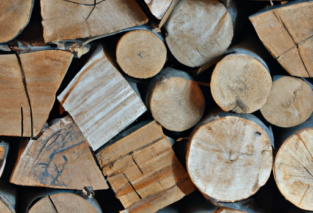In this article, you will learn some essential tips and techniques for safely handling and working with exotic and specialty woods. We will discuss the importance of proper safety equipment, such as gloves and goggles, and how to identify any potential hazards associated with these types of woods. Additionally, we will explore techniques for cutting, shaping, and finishing exotic and specialty woods to ensure the best results while keeping yourself safe. By the end of this article, you will have the knowledge and confidence to work with these unique materials without any worries.
Choosing the Right Wood for Your Project
When it comes to woodworking projects, choosing the right wood is crucial for the success and longevity of your creation. Exotic and specialty woods provide unique and beautiful options that can elevate your projects to the next level. However, it is important to understand the different types of wood available and consider factors such as durability, grain pattern, and stability before making a selection.
Exotic woods, like mahogany, teak, and ebony, are known for their unique grain patterns and rich colors. These woods are often harder and denser, making them ideal for furniture or decorative pieces. On the other hand, specialty woods, such as burls or spalted wood, offer distinctive features and can add a touch of elegance to your projects. However, these woods may require special handling and treatment due to their unique characteristics.
Before starting your project, research the specific type of wood you plan to use. Understand its properties, such as shrinkage, expansion, and moisture content. This will help you determine if the wood is suitable for your intended purpose and if any additional steps need to be taken during the construction process to ensure stability.
Preparing the Wood for Work
Once you have chosen the right wood for your project, it is essential to prepare it properly before beginning any woodworking tasks. Start by inspecting the wood for any defects or damage. Look for cracks, knots, or insect infestations that may compromise the integrity of the piece. If you come across any issues, consider whether they can be repaired or if it would be best to select a different piece of wood.
After inspecting the wood for defects, remove any rough edges or splinters. This can be done using a hand plane, sandpaper, or a chisel. Make sure to wear gloves and eye protection while performing this task to protect yourself from any potential injury.
Once the rough edges and splinters are removed, the next step is sanding the wood to achieve a smooth surface. Start with a coarse-grit sandpaper and gradually move to finer grits, finishing with a fine-grit sandpaper for a polished surface. Take your time during this process to ensure an even and smooth finish.

Safety Precautions and Personal Protective Equipment
Working with wood can be a fulfilling and enjoyable experience, but it is important to prioritize your safety. Safeguard yourself by wearing safety goggles, a dust mask, and gloves. Safety goggles protect your eyes from flying debris, while a dust mask prevents you from inhaling harmful dust particles. Gloves not only provide protection from rough surfaces but can also enhance your grip and control.
In addition to personal protective equipment, it is crucial to work in a well-ventilated area. Woodworking often generates a significant amount of dust and fumes, which can be hazardous if inhaled over a prolonged period. Ensure proper ventilation by opening windows or using fans to remove dust and fumes from your workspace.
Implementing a dust collection system is another effective measure to minimize dust exposure. This can be achieved by using a vacuum or installing a dedicated dust collection unit. Regularly clean and maintain these systems to ensure their effectiveness and prevent dust buildup.
Proper Handling Techniques
Woodworking often involves working with heavy pieces of wood. To prevent injuries, it is essential to lift and carry them using proper body mechanics. Bend your knees and use your leg muscles to lift the wood, rather than relying solely on your back. Avoid twisting or jerking motions while carrying the wood and be mindful of your center of gravity to maintain balance.
When working with large or unwieldy pieces, using clamps or supports can help secure the wood and prevent it from moving or tipping over during work. This provides stability, allowing you to work with confidence and precision.

Tool and Equipment Selection
Choosing the right tools for the job is essential for achieving clean cuts and reducing the risk of accidents. Select tools based on the type of wood and the specific task at hand. Dull blades and bits can cause tear-outs and splintering, so make sure to use sharp ones to ensure clean cuts and minimize the risk of accidents.
Investing in high-quality tools is worth considering, as they often provide better performance, durability, and safety features. Regularly inspect and maintain your tools to keep them in optimal condition. Replace any worn-out or damaged tools to maintain the highest level of safety during your woodworking projects.
Cutting, Shaping, and Joining the Wood
When it comes to cutting and shaping wood, it is important to use appropriate techniques based on the type of wood you are working with. Different woods may require different cutting methods to achieve clean and accurate results. Research and practice the appropriate techniques before starting your project to avoid mistakes or damage to the wood.
Chisels, saws, and hand planes are common tools used for shaping wood. These tools require precision and control to achieve the desired shape or contour. Take your time and work slowly, making small adjustments as needed.
When joining wood, selecting the correct method is crucial for a secure connection. There are various joinery techniques, such as dovetail joints, mortise and tenon joints, or biscuit joints. Research and choose the method that best suits your project, while ensuring strength and stability.
Finishing and Sanding
After shaping and joining the wood, it is time to apply the finishing touches. The choice of finishes and sealers will depend on the type of wood and the desired outcome. Exotic and specialty woods often benefit from oil-based finishes or lacquers to enhance their natural beauty. Follow the manufacturer’s instructions regarding application and drying times to achieve the best results.
Sanding is an essential step in achieving a smooth and professional finish. After applying the finish, use a fine-grit sandpaper to remove any imperfections, such as dust particles or uneven surfaces. Sanding will also help to smooth any rough edges or corners that may have been created during the construction process. Take your time and sand in a controlled manner to maintain the quality of your work.
Proper Storage and Maintenance
Proper storage and maintenance of your wood and tools is essential for the longevity and quality of your projects. Store your wood in a dry and well-ventilated area to prevent warping or mold growth. Avoid exposing the wood to direct sunlight or extreme temperature changes, as this can impact its stability.
Regularly inspect and clean your tools and equipment to ensure they are in good working condition. Keep blades and bits sharp and free from rust or debris. Clean and oil any moving parts to prevent corrosion and maintain smooth operation.
Dealing with Allergies and Health Issues
Exotic and specialty woods may carry allergens that can cause adverse reactions in some individuals. Before working with these woods, familiarize yourself with common allergies associated with them. If you are sensitive or have a known allergy, take necessary precautions to minimize health risks. This may include wearing a mask or working in a well-ventilated area to reduce exposure.
If you experience any symptoms such as itching, sneezing, or respiratory distress while working with exotic or specialty woods, stop immediately and seek medical attention if necessary. It is always better to prioritize your health and well-being over completing a project.
Conclusion
By following the proper safety measures and adopting the right techniques, you can safely handle and work with exotic and specialty woods to create stunning projects. Understanding the different types of wood available, preparing the wood properly, using personal protective equipment, and selecting the appropriate tools and techniques will help you achieve professional results while minimizing the risk of injury. Remember to prioritize your safety and health throughout the woodworking process, and enjoy the fulfilling experience of working with beautiful and unique woods.





